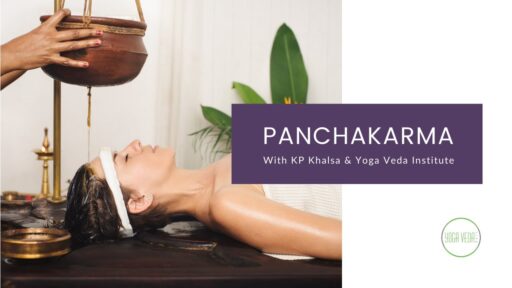Get ready to embark on a journey of rejuvenation and healing with “Panchakarma: The Fivefold Detoxification Therapy in Ayurveda”. This ancient Indian science offers a unique blend of therapeutic procedures that soothes your mind, body, and soul. As you read on, you’ll discover a beautiful symphony of five therapies that not only detox your body, but also harness the power of balance and harmony. Explore how this holistic approach can transform and infuse a spark of vitality, making you feel reborn and invigorated. Stay with us as we unravel the mysteries of Panchakarma, an art of rejuvenation that’s as old as time.

Basics of Panchakarma
Definition of Panchakarma
Panchakarma, which means “five actions” or “five treatments”, is a methodology used in Ayurvedic medicine to cleanse the body of toxic materials left by disease, poor nutrition, and environmental pollutants. Often, our natural capabilities to expel these waste materials are not efficient, especially when disease is present. That is where Panchakarma comes in. It’s a procedure that is used to clean the body thoroughly.
Significance in Ayurvedic treatment
In Ayurveda, the preservation of health is given the highest priority. Panchakarma holds paramount importance in Ayurvedic treatment as it eliminates toxins from the body and restores youth with the help of medicated oils. It also emphasizes balancing three fundamental bio-elements known as the Doshas: Vata, Pitta, and Kapha. Panchakarma, when performed regularly, provides an increased lifespan, augments strength, enhances sensory ability, bestows an improved complexion and clarity of voice, and slows the overall aging process.
Origin and History
Panchakarma is a profound cornerstone of the ancient Ayurvedic healthcare system. It has been mentioned in the classical Ayurvedic texts like Charak Samhita and Sushruta Samhita. This rich heritage carries treatments which have stood the test of time, being practiced for over 5000 years.
The Panchakarma Process
Pre-Purification Process
Before Panchakarma, the body should be in a hypermetabolic state which aids to release and mend toxins. This is achieved by the two procedures of Snehana (oil massage) and Swedana (sweating). Snehana involves rubbing the entire body with medicated oil or ghee for three to seven days. Swedana is steam therapy which is done to make toxins soft and to stimulate them to come out to various body channels for easy elimination.
Purification Process
The next phase is the main Panchakarma process, which involves five procedures that are planned according to the individual’s Dosha imbalance. These include Vamana (therapeutic vomiting), Virechan (purgation), Basti (enema), Nasya (nasal administration), and Raktamokshana (blood-letting).
Post-Purification Process
After the Panchakarma treatment, a special diet regimen and lifestyle is to be followed. Now the digestive fire is in a very delicate phase and a very light diet is prescribed for a few days, after that the specific dietary requirement is slowly reintroduced.

The Five Therapies of Panchakarma
Vamana
Vamana or emesis therapy is a procedure in which Doshas are eliminated through the upper gastrointestinal tract. After pre-procedure protocols, the person undergoes induced vomiting, which expels Kapha toxins from the head and chest region.
Virechana
Virechana is a therapeutic method for the elimination of Pitta Dosha from the body. It’s a controlled process that gathers the doshas from many areas in the body into the gut and then expels them.
Basti
Basti is the introduction of medicinal substances like herbalized oils and decoctions in a liquid medium into the rectum. This procedure mitigates Vata Dosha and is considered one of the most beneficial Panchakarma treatments.
Nasya
Nasya is a treatment that involves the application of medicinal drugs or oils through the nostrils. It’s the primary procedure for treating the diseases of the head region.
Raktamokshana
Raktamokshana, though less commonly practiced today, is a procedure used to cleanse the blood and is advised only in very rare conditions.
Benefits of Panchakarma
Detoxification of Body
Panchakarma promotes detoxification and rejuvenation. It’s effective mainly because it focuses on loosening and eliminating toxins from the tissues.
Boosting Immunity
By eliminating toxins from the body, Panchakarma purifies the biological systems, which enhances the natural biological fire inside, thus boosting immunity and inducing vitality.
Balancing Doshas
Through its three-stage process, Panchakarma helps balance the Doshas: Vata, Pitta, and Kapha, thereby restoring harmony and wellbeing.
Improvement of Mental Health
In addition to physical detoxification, Panchakarma also induces mental relaxation by relieving stress, improving mental clarity, and producing a state of calm and relaxation.
Prolongation of Life Span
By fortifying the immune system and balancing the body functions, Panchakarma helps to increase one’s lifespan and keep diseases at bay.

Preparation for Panchakarma
Pre-treatment Dietary Guidelines
Before beginning with Panchakarma, one should follow a specific diet to prepare the body. The diet is usually light and warm to increase the Agni (digestive fire) and promote internal oleation.
Snehana and Swedana
Just before the actual Panchakarma process, Snehana (oil application) and Swedana (fomentation) are done for seven days. This soften the channels and ripen the Doshas, preparing the body for the elimination of toxins.
Mental Preparation
One should be mentally prepared before indulging in Panchakarma as it’s an intensive process that includes not only physical, but mental detoxification as well.
Experience of Panchakarma
During the Treatment
Panchakarma treatments provoke reactions. It’s common to be a little uncomfortable during the process as toxins are moved out from their latent spaces.
Post-Treatment Care and Guidelines
Post-Panchakarma, one must stick to a prescribed diet and lifestyle to support the body. Physical exertion and late nights must be avoided for a while.
Expected Results and Changes
After a comprehensive Panchakarma treatment, you should expect to feel lighter, healthier, and more energetic. Chronic symptoms should decrease and one’s clarity of mind should increase.
Risk and Side Effects of Panchakarma
Possible Discomfort during Procedures
Depending on the treatment, Panchakarma can be a bit unpleasant at times. You may experience discomfort during the elimination procedures as the body releases accumulated toxins and Doshas.
Potential Health Risks
Unless administered by skilled therapists under the guidance of an expert Ayurvedic physician, Panchakarma can present certain risks. It is not recommended for those who are weak or pregnant.
Managing Side Effects
To tackle the potential risks and side effects, it’s vital to ensure that Panchakarma is carried out under the supervision of experienced practitioners. It’s also important to follow the dietary restrictions and lifestyle changes recommended by them.
Panchakarma Vs Western Detox Methods
Comparison of Methodology
Panchakarma employs a holistic approach that includes five procedures to expel toxins from the body, while western detox methods often hinge on diet and supplements for detoxification.
Efficacy Comparison
Panchakarma not only removes toxins but also rejuvenates the body, making it healthier and stronger. Western methods focus mainly on removing unwanted substances without necessarily strengthening the body.
Side-Effects Comparison
The side-effects of Panchakarma are mostly mild and temporary, whereas some western detox methods can have severe side-effects like nutritional deficiencies and electrolyte imbalances.
In-depth look at Ayurvedic Principles
Concept of Doshas
Ayurveda believes that everything in the universe is composed of five basic elements: Space, Air, Fire, Water, and Earth. These elements combine in the human body to form three life forces or energies, called Doshas.
Philosophy of Healing
Ayurveda is based on the philosophy that disease is due to an imbalance or stress in an individual’s consciousness. The Ayurvedic approach to illness is holistic and therefore, after an Ayurvedic treatment, a person feels rejuvenated because the balance is restored in nerves, mind, and body.
Understanding Prakriti
Prakriti is the inherent nature or constitution of an individual, determined at conception, which remains unchanged during a person’s lifetime. This inherent constitution influences one’s physiological characteristics, susceptibility to diseases, mental temperament, and lifestyle preferences.
Future of Panchakarma and Ayurveda
Scientific research and Developments
Scientific research is being conducted on Ayurveda and Panchakarma globally, and new developments and understandings are emerging every day. Panchakarma research is gaining prominence due to its efficacy and absence of side effects when performed correctly.
Integration with Western Medicine
Integration of Panchakarma and Western Medicine can provide a complete healthcare system to the world. While Western medicine is excellent in surgical and emergency care, Ayurveda and Panchakarma can fill the gaps in chronic disease management and preventative care.
Global Acceptance and Popularity
With the rising global popularity of Ayurveda, Panchakarma is being recognized worldwide due to its efficient detoxification and rejuvenation capacity. It’s also gaining acceptance in various countries as a natural way to achieve overall well-being.
